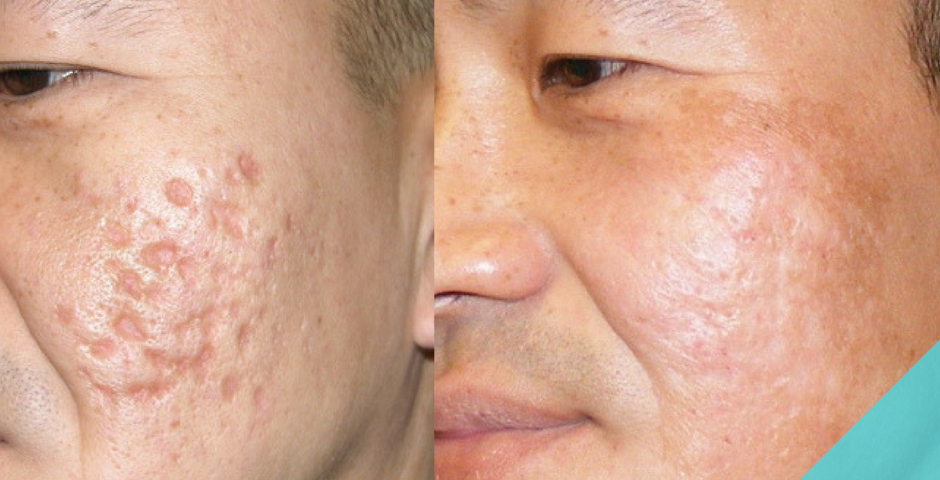Exploring Skin Disease: Dealing With and identifying Acne Scars for Healthier Skin
Acne marks represent a considerable issue for individuals seeking to maintain healthy and balanced skin, as they can influence both look and self-esteem. Comprehending the numerous kinds of scars, from atrophic to hypertrophic, is vital for identifying suitable treatment choices. While professional interventions like chemical peels and microneedling can be reliable, the importance of personalized care strategies can not be overemphasized. In addition, preventative actions play a crucial role in lessening future scarring. As we explore these elements, one have to take into consideration exactly how the best strategy can bring about transformative outcomes.
Comprehending Acne Scars

The body's natural recovery procedure can cause either atrophic scars, which appear as anxieties in the skin, or hypertrophic scars, which are increased and arise from overflow of collagen. In addition, the psychological toll of acne scars ought to not be undervalued; several people report feelings of embarrassment, anxiousness, and decreased self-worth. This psychological burden can impact social interactions and general lifestyle.
Addressing acne marks calls for a comprehensive understanding of their formation and impact. Awareness of the potential for long-term consequences connected with neglected scars can motivate individuals to seek appropriate treatments. Early treatment and reliable monitoring approaches can dramatically boost skin look and improve mental durability, emphasizing the importance of understanding the intricacies bordering acne scars.
Sorts Of Acne Marks
Acne marks can be categorized into distinctive kinds, each displaying special qualities and requiring specific therapy techniques. skin rejuvenation treatments. The key kinds of acne marks consist of atrophic, hypertrophic, and keloid scars

Hypertrophic marks, in contrast, are increased over the skin degree and are the result of extreme collagen production throughout the healing process. They commonly remain within the borders of the original acne lesion. Keloid marks are comparable but extend beyond the initial injury website, creating larger, raised areas that can be uncomfortable or scratchy.
Recognizing these types of scars is important for choosing ideal therapy choices. Various marks might react far better to specific therapies, such as laser treatments, fillers, or surgical interventions, emphasizing the significance of a tailored method to acne scar administration.
Recognizing Your Scars
Acne scars typically fall right into 2 categories: atrophic and hypertrophic marks. These can better be identified into ice-pick scars, boxcar scars, and rolling scars, each exhibiting distinct qualities and needing various techniques for assessment.
Hypertrophic scars, on the other hand, are raised and occur due to extreme collagen production during the healing process. Recognizing the particular attributes of your marks-- such as width, texture, and deepness-- is necessary for correct recognition (skin rejuvenation treatments). In addition, consider the distribution of marks throughout your skin, as this can show the intensity and period of the acne condition
Engaging with a skin doctor can give useful insights into the nature of your marks, helping in the distinction in between different types. A thorough understanding of your marks will eventually result in a more customized and efficient treatment strategy, making sure a clearer and healthier skin.
Treatment Options Readily Available
Determining the specific kind of acne scars existing on your skin lays the foundation for exploring reliable treatment options. Usual kinds of acne scars consist of atrophic (depressed), hypertrophic (elevated), and post-inflammatory erythema.
For atrophic scars, alternatives such as chemical peels, microneedling, and laser resurfacing are commonly used. Chemical peels off utilize acids to eliminate the external layer of skin, promoting brand-new cell development.
Hypertrophic scars can be treated with corticosteroid shots to squash the scar or laser treatment to reduce inflammation and improve appearance. Silicone gel sheets and stress dressings may also help in managing increased marks.
On top of that, dermal fillers can briefly complete depressions from atrophic marks, while surgical excision may be ideal acne scars treatment for severe situations. Each therapy alternative has its benefits and considerations, making it important to consult with a skin specialist. They can give personalized suggestions based on the kind and extent of your marks, as well as your skin type and general health and wellness.
Tips for Avoidance
Efficient prevention techniques can dramatically decrease the possibility of creating acne marks. Making use of non-comedogenic products aids prevent clogged up pores, which can intensify acne.
Avoiding need to pop or select acne sores is crucial, as this can result in deeper skin damage and increase the risk of scarring. Instead, consider making use of a cold compress or over the counter therapies to decrease swelling and soreness.
Sun defense is one more essential facet of prevention; ultraviolet (UV) rays can darken scars and hinder the recovery process. Applying a broad-spectrum sun block with a minimum of SPF 30 daily can secure the skin and advertise even recovery.
Lastly, maintaining a well balanced diet plan abundant in anti-oxidants, vitamins, and minerals sustains skin health and wellness and recovery. Remaining hydrated and taking care of stress levels can additionally play a substantial function in decreasing acne flare-ups. By carrying out these approaches, people can substantially minimize their possibilities of creating acne scars.
Conclusion
In conclusion, understanding and identifying acne marks is important for reliable therapy and attaining much healthier skin. Various types of acne scars, consisting of atrophic and hypertrophic marks, demand specific treatments customized to private needs.
The body's natural healing process can result in either atrophic marks, which show up as clinical depressions in the skin, or hypertrophic scars, which are increased and result from overflow of collagen. They are further separated into 3 subtypes: ice choice marks, boxcar marks, and rolling scars. Acne scars typically fall into 2 categories: atrophic and hypertrophic scars. These can even more be identified into ice-pick scars, boxcar scars, and rolling scars, each exhibiting distinct features and calling for different strategies for analysis.
Numerous types of acne marks, consisting of atrophic and hypertrophic marks, demand particular treatments tailored to individual needs.